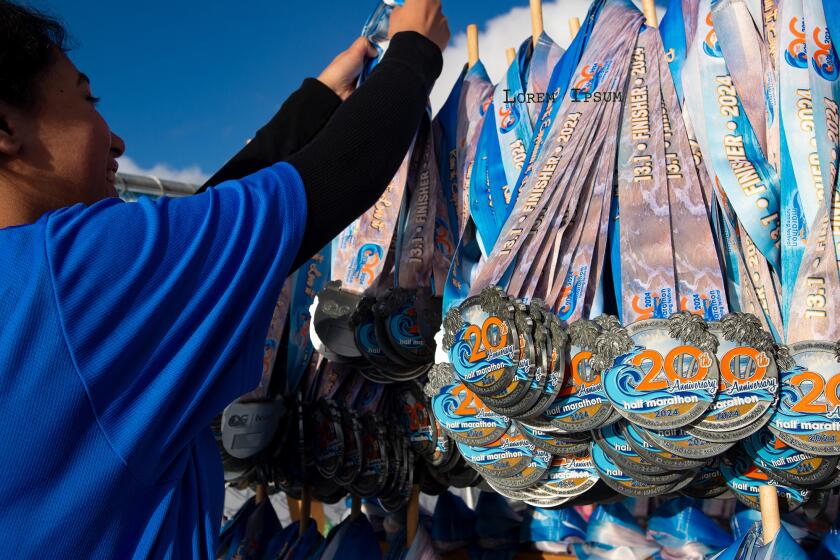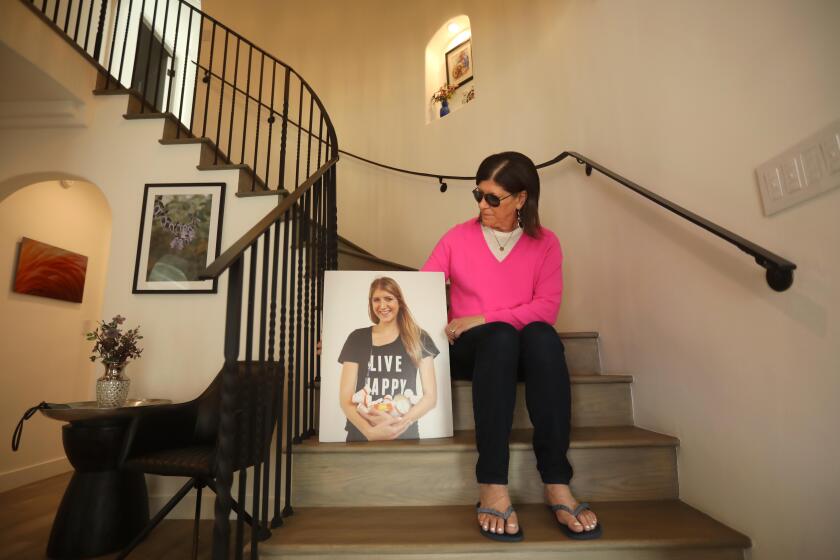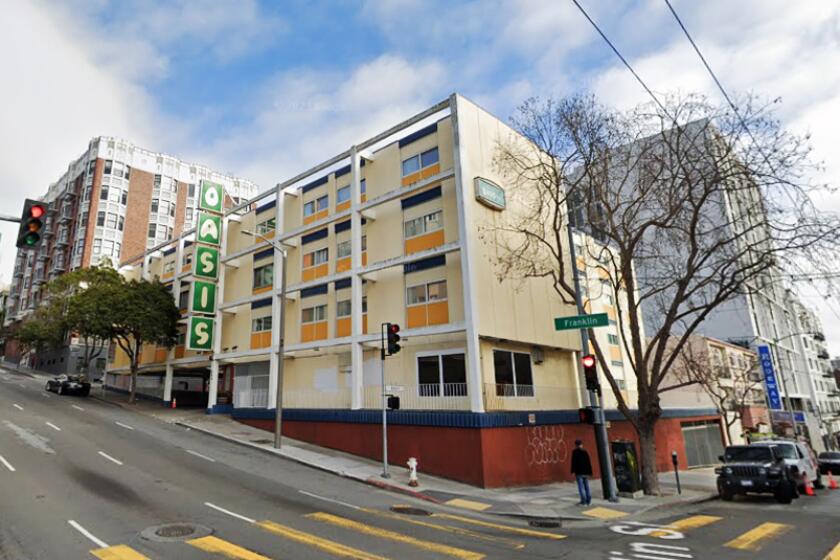Asian Inmates Still Fear Attacks in Integrated Jails
Despite widely reported fears of violence, there has been no upsurge in attacks against Asian inmates in the Los Angeles County Jail system since they were returned to the general population in late January after a decade of protective separation.
The inmates were segregated in 1994 after the Mexican Mafia placed a “green light” on some Asian gang members -- authorizing Latino gangs to target them for beatings and stabbings, according to Capt. Ray Leyva of the Los Angeles County Sheriff’s Department, which administers the jails.
For the record:
12:00 a.m. Feb. 13, 2004 For The Record
Los Angeles Times Friday February 13, 2004 Home Edition Main News Part A Page 2 National Desk 1 inches; 53 words Type of Material: Correction
Asian inmates -- An article in Sunday’s California section about violence against Asian inmates in the Los Angeles County jail system referred to “a Latino gang known as the Southsiders.” Although the word has been used to refer to members of Southern California Latino gangs, Southsiders is not the name of a gang.
But Leyva said last week that only one assault against an Asian inmate had been reported since the integration was ordered Jan. 20. Some Asian inmates agree that their worst fears have not been realized -- yet.
“I expected to be jumped or to be doing the jumping to defend myself every night, but it hasn’t been like that,” said Hon Tse, a Hong Kong native charged with home-invasion robbery who said he has had no racial fights since leaving the segregated unit.
He added, however, that many Asian inmates still feared that the relative calm would vanish if media attention to family concerns waned and vigilant monitoring by sheriff’s deputies eased up. “If there’s no media,” Tse said, “we guarantee that we’ll be beat up every day, injured and even die.”
According to Leyva and others, the Mexican Mafia issued the green light amid simmering problems between Latino and Asian gangs in Long Beach.
One 1997 hit list obtained by a veteran gang investigator approved assaults against Japanese, Chinese, Cambodians, Vietnamese and Koreans but ordered that Filipinos, Hawaiians and natives of Guam be left alone. In practice, however, many Latino gang members made no distinctions among the different groups, Leyva said.
“If they see someone who looks Asian, they take action,” he said. He said the potential danger to all Asian inmates was one reason the department originally segregated them.
The decision to end the segregation policy was “pretty much a business decision,” Leyva said, as severe jail overcrowding forced officials to look for more bed space.
Leyva said he believed the green light remained on for one Asian gang, whose members remain segregated. But he said sheriff’s deputies were confident that other Asian inmates could safely return to the general jail population because there had been few problems when they did mingle with others -- in courthouse detention areas or on buses, for instance.
Many Asian inmates resisted orders to return to the general jail population on Jan. 20, barricading their cell doors with beds and setting fire to mattresses. Chief Chuck Jackson of the sheriff’s correctional services division said the resistance had been quelled with pepper spray.
Families of some inmates are pressing Los Angeles County Sheriff Lee Baca to reestablish separate quarters. At least two families said that, since the change, their loved ones had been beaten by inmates from a Latino gang known as the Southsiders.
Mack Harding, a Granada Hills resident and retired airline worker, said his grandson had called him from jail to report he had been beaten and almost stabbed by five Southsiders in his new cell.
Harding said his grandson is particularly vulnerable to serious injuries from upper body blows because he had steel plates in his neck, a consequence of a near-fatal auto accident. When he later saw his grandson in court, Harding said, the young man had bruises and swelling on one side of his face.
“I’m really afraid for his life,” Harding said, adding that sheriff’s deputies had since moved his grandson to a cell with another Asian inmate.
Hector Pasillas, an inmate of Chinese, Spanish and Italian descent, said he had initially been placed in a cell with four Southsiders, who told him the green light was off and he wouldn’t be bothered as long as he followed their rules. But he said he had ended up brawling with three of them anyway over what he called “insults to my heritage.”
Leyva said he was unable to corroborate the two cases, adding that not every crime committed in the jail system is reported to authorities. In the one assault that was reported, Leyva said, an Asian inmate said he had been jumped by two Southsiders, who denied the charges.
Asian, American Indian and Pacific Islanders account for 3.4% of the 14,800 male inmates in the Los Angeles County Jail system’s seven facilities. Latinos compose 41.6%, African Americans 30% and whites 14%.
Jackson said racial violence was not a widespread problem in the jails and that the department promoted safety by extensively screening new inmates, balancing cells to prevent one race from dominating and communicating with prisoners to ward off problems in a program, “Operation Safe Jails.” Prisoners who might invite attacks, such as homosexuals and child molesters, remain segregated.
Racial tensions, however, do exist -- in some facilities more than others.
Inmates often segregate themselves, dividing up bunks, tables and telephones.
Leyva said the integration has allowed Asians to take advantage of a wider variety of services available only to the general jail population, such as schooling and work programs.
Some Asian inmates remain unconvinced of integration’s benefits, however.
“It’s like feeding us to the sharks,” said Raymond Lim, an inmate of Chinese and Cambodian descent jailed on attempted murder. “You can see the tension around here, and when it hits us, it’s going to hit us hard.”
*
Times staff writer Robert J. Lopez contributed to this report.
More to Read
Start your day right
Sign up for Essential California for news, features and recommendations from the L.A. Times and beyond in your inbox six days a week.
You may occasionally receive promotional content from the Los Angeles Times.







